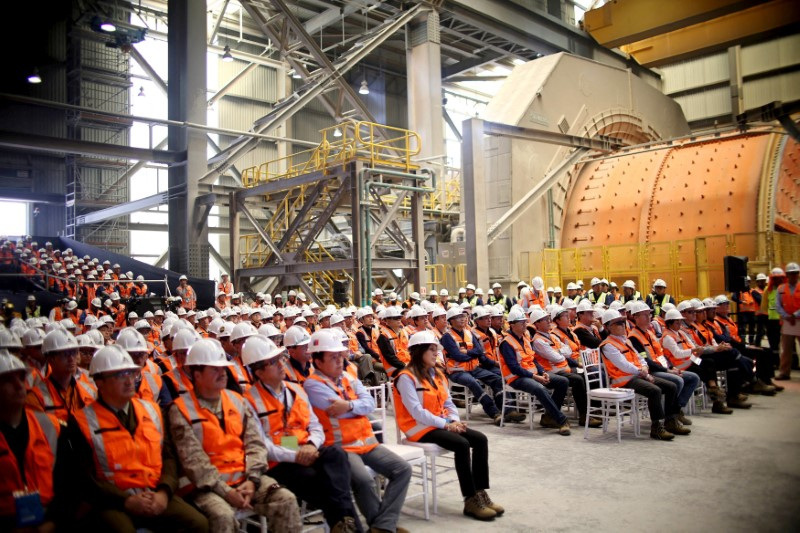Could a union halt production at the world’s biggest copper mine?
2024.08.13 23:36
By Fabian Cambero and Alexander Villegas
SANTIAGO (Reuters) – A powerful workers union behind a strike at BHP’s huge Escondida mine, which produced nearly 5% of the world’s in 2023, is looking to snarl production at the site as it pushes for a bigger share of profits.
The union, which launched a strike on Tuesday, has paralyzed the world’s largest copper mine before and driven up global copper prices. This time, much depends on how quickly negotiations can unlock the standoff.
“(Escondida’s union) has a history of hard negotiations, with no fear of striking to achieve their goals,” said Andres Gonzalez, head of Plusmining consultancy in Santiago.
When the union held a 44-day strike in 2017, global copper prices spiked as BHP declared “force majeure” two days into the strike, meaning it could not fulfill its contracts.
The company also had to declare force majeure in 2006 after a 26-day strike, and in 2011 the union stopped operations for 14 days. The union went on a hunger strike in 2015. A strike was just avoided in 2021 despite a labor dispute.
Three elements make the union especially strong, Gonzalez said. The union has about 2,400 members, about 61% of Escondida’s workforce. It has strong financial reserves to take care of workers during a strike. And lastly, Chilean legislation doesn’t let the company replace striking workers.
“The company will be forced to stop an important part of their operations, which evidently gives (the union) enormous bargaining power,” Gonzalez added.
Aside from comprising a majority of the total workforce, the Sindicato Nro. 1 (Union No. 1) makes up 98% of Escondida’s frontline workers that include machine operators, drivers, technicians and maintenance workers – all key to keeping up production.
Patricio Tapia, president of the Escondida union since 2016 and part of the union leadership since 2008, told Reuters previously that the union has four times more funds than in 2017 as well as credit to meet worker needs during the strike.
The 2017 strike ended when the union used local legislation to freeze the expired contract and then negotiated for another 18 months.
COPPER MARKET CALM FOR NOW
BHP on Tuesday evening said the union had rejected its latest invitation to restart talks, although the labor group has asserted it is willing to resume dialogue.
The company said its contingency plan calls for allowing non-unionized workers to continue working, and that operations were continuing, although it did not specify to what degree.
“The (Escondida) union might be small compared to others, but they’re more than 2,000 people that control the largest copper mine in the world,” said Gustavo Lagos, an analyst from Chile’s Catholic University mining center.
A smaller strike ongoing at Lundin’s Caserones mine, also in Chile, is less likely to affect production since only 30% of employees there are in the mine’s union.
Copper prices have yet to see a big impact for the current strike, with analysts citing weak demand from top copper consumer China and hopes for a quick resolution. However, that could change if the strike action hardens.

A key sticking point is a union request for 1% of the shareholder dividends at the mine to be distributed to workers, which would be around $35,000, according to analyst estimates. The union also demanded this in 2021 but was able to reach an agreement that included a bonus of about $23,000 and nearly $4,000 in overtime bonuses.
BHP has offered workers a bonus of $28,900 this time.








